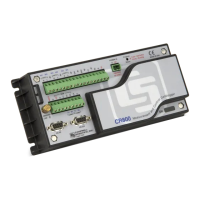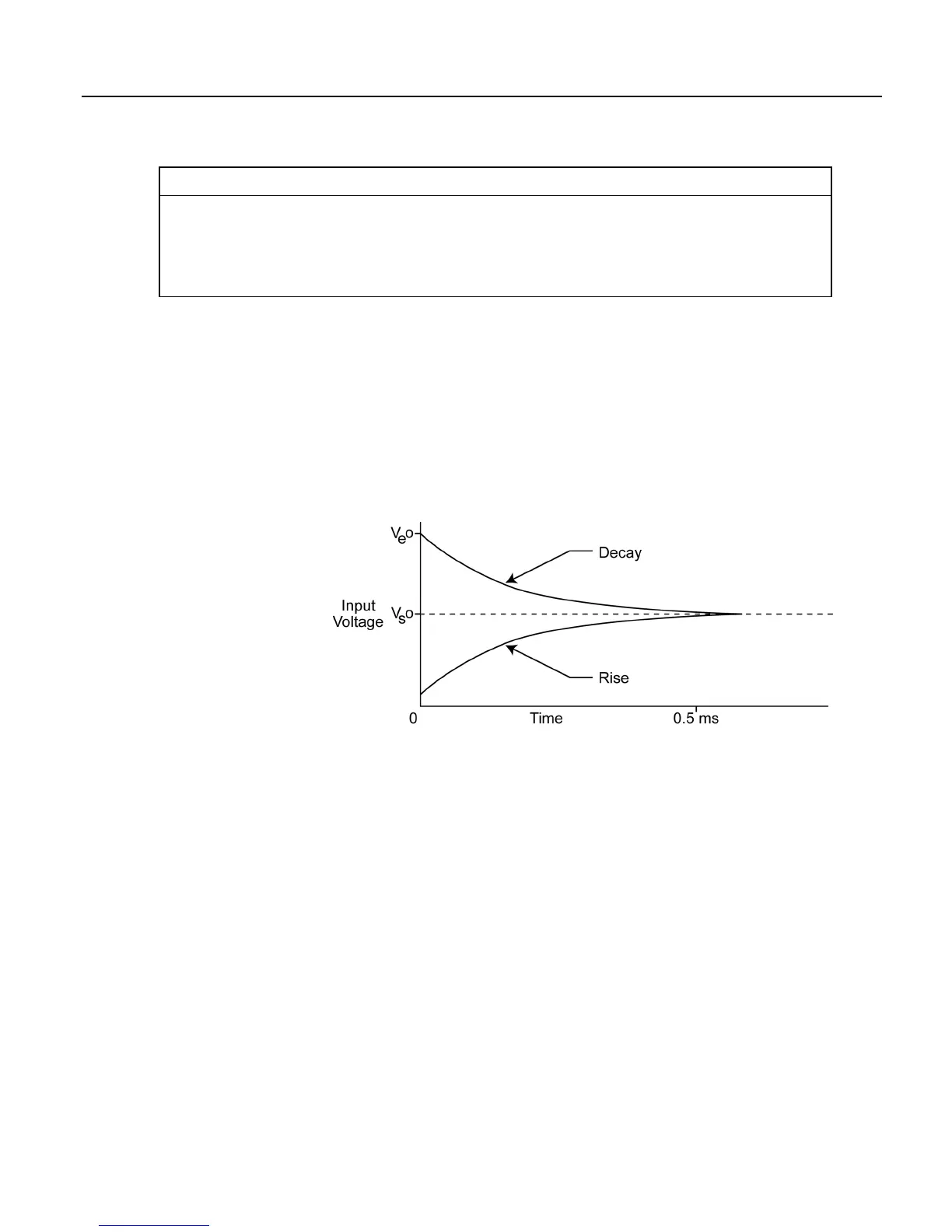Section 8. Operation
282
Table 56. ac Noise Rejection on Large Signals
2. During A/D, CR800 turns off excitation for ≈170 µs.
3. Excitation is switched on again for one-half cycle, then the second measurement is made.
Restated, when the CR800 is programmed to use the half-cycle 50-Hz or 60-Hz rejection techniques, a sensor does not see a
continuous excitation of the length entered as the settling time before the second measurement if the settling time entered is greater
than one-half cycle. This causes a truncated second excitation. Depending on the sensor used, a truncated second excitation may
cause measurement errors.
8.1.2.8 Signal Settling Time
When the CR800 switches to an analog input channel or activates excitation for a
bridge measurement, a settling time is required for the measured voltage to settle
to its true value before being measured. The rate at which the signal settles is
determined by the input settling time constant, which is a function of both the
source resistance and fixed input capacitance (3.3 nfd) of the CR800.
Rise and decay waveforms are exponential. Figure Input Voltage Rise and
Transient Decay
(p. 282) shows rising and decaying waveforms settling to the true
signal level, V
so
.
Figure 89: Input voltage rise and transient decay
The CR800 delays after switching to a channel to allow the input to settle before
initiating the measurement. The SettlingTime parameter of the associated
measurement instruction is provided to allow the user to tailor measurement
instruction settling times with 100 µs resolution up to 50000 µs. Default settling
times are listed in table CRBasic Measurement Settling Times
(p. 283), and are
meant to provide sufficient signal settling in most cases. Additional settling time
may be required when measuring high-resistance (high-impedance) sensors and /
or sensors connected to the datalogger by long leads. Measurement time of a
given instruction increases with increasing settling time. For example, a 1 ms
increase in settling time for a bridge instruction with input reversal and excitation
reversal results in a 4 ms increase in time for the CR800 to perform the
instruction.

